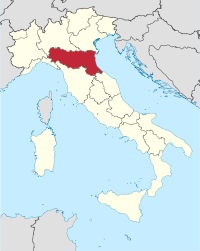
Photo from wikipedia
This paper describes the measures adopted by Lombardy and Emilia-Romagna (two Italian regions) for planning their peri-urban areas at regional level. Peri-urban territories merge urban and rural features and extend… Click to show full abstract
This paper describes the measures adopted by Lombardy and Emilia-Romagna (two Italian regions) for planning their peri-urban areas at regional level. Peri-urban territories merge urban and rural features and extend beyond the municipal administrative boundaries. This prevents their precise delimitation, as well as the adoption of municipal plans for their governance coherent with its spatial, economic and social development. As consequence, many municipal authorities do not reserve consistent attention to these territories and adopt territorial plans based only on urban-rural dichotomy or land-use micro-transformations. Since their jurisdiction extends to supra-municipal level, the regions could play a decisive role in peri-urban governance. This is the case of Lombardy and Emilia-Romagna regions, which are some of the few regions in Italy to have elaborated specific legislative and planning documents in order to promote the spatial urban-rural equilibrium in the urban fringes. As demonstrated at the end of a document analysis concerning spatial planning laws and plans, both regions experiment specific measures for the agro-environmental balance and urban regeneration in peri-urban areas, but they do not delimit them spatially or adopt specific measures for their governance. Further, they do not jointly regulate or plan the urban macro-region that extends across their regional territories, from Varese (North Lombardy) to Rimini and Ravenna (South-East Emilia-Romagna), resulting from the merger of their peri-urban areas.
Journal Title: Land Use Policy
Year Published: 2021
Link to full text (if available)
Share on Social Media: Sign Up to like & get
recommendations!